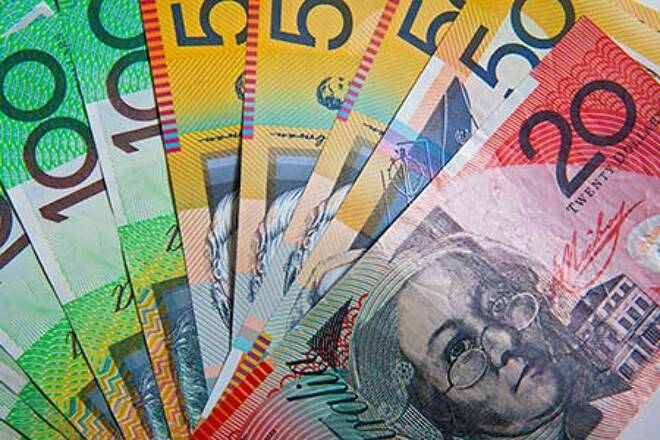Advertisement
Advertisement
Forex Price Action Indicates Shift in Investor Sentiment
By:
The Forex market was most interesting last week with activity in all majors. The AUD/USD was the most volatile from high to low, the EUR/GBP produced the
The Forex market was most interesting last week with activity in all majors. The AUD/USD was the most volatile from high to low, the EUR/GBP produced the biggest percentage gain and the USD/JPY posted the biggest percentage loss.
Did We Just See the Top in the AUD/USD?
The AUD/USD was the most volatile Forex pair last week with a range of .7731 to .7547, or 0.0184. For the week, the Aussie closed at .7552, down 0.0016 or -0.22%.
The Australian Dollar logged its largest rally in two months on September 6 with the help of a weaker U.S. Dollar. The AUD/USD posted a whopping 1.43% gain this day, putting the Forex pair at its highest level since August 16 while producing the largest one-day percentage gain since June 23, the day before the U.K. Brexit referendum.
Traders were responding to a weaker-than-expected U.S. August ISM non-manufacturing (services) index that reduced the chances of a Fed rate hike in September. Additionally, the Aussie was also underpinned by expectations of a strong Australian GDP report.
After spiking to .7732 on September 8 in response to better-than-expected trade numbers from China, and the European Central Banks’s decision to leave interest rates and stimulus at current levels, the rally stalled and sellers piled on to produce a technically bearish closing price reversal top.
The selling may have been triggered by hawkish comments from outgoing RBA chief Glenn Stevens who said in a magazine article that the Australian Dollar may be trading at fair value.
The sell-off continued on Friday as investors aggressively shed risky assets after a normally dovish and voting Fed member Eric Rosengren suggested that the U.S. economy was strong enough for a Fed rate hike. He also warned that low rates are raising the chance of overheating the U.S. economy.
Did ECB Pass on Stimulus to Help the Fed?
The EUR/USD closed at 1.1214, up 0.0062, or +0.55% and the EUR/GBP finished the week at .8457, up .0071 or +0.85%.
The Euro rallied sharply against the U.S. Dollar and British Pound on September 8 after the European Central Bank decided to leave interest rates in negative territory and stimulus at current levels. Most investors expected rates to remain unchanged, but a minority expected an extension or increase of the stimulus package.
The Euro took off to the upside after ECB President Mario Draghi said the central bank committee hadn’t even discussed the topic of extending or expanding stimulus.
Traders reacted to his comments by buying the Euro as it served as an indication that perhaps the ECB had run out of ammunition and that there would be no further action by the central bank to simulate the economy.
After Friday’s hawkish comments from a key Fed official that opened the door to a possible rate hike by the Fed in September, some investors thought that the ECB’s refusal to adjust stimulus levels served to accommodate the Fed. After all, more stimulus from the ECB and a rate hike by the Fed would’ve have probably crushed the Euro.
About the Author
James Hyerczykauthor
James is a Florida-based technical analyst, market researcher, educator and trader with 35+ years of experience. He is an expert in the area of patterns, price and time analysis as it applies to futures, Forex, and stocks.
Did you find this article useful?
Latest news and analysis
Advertisement
